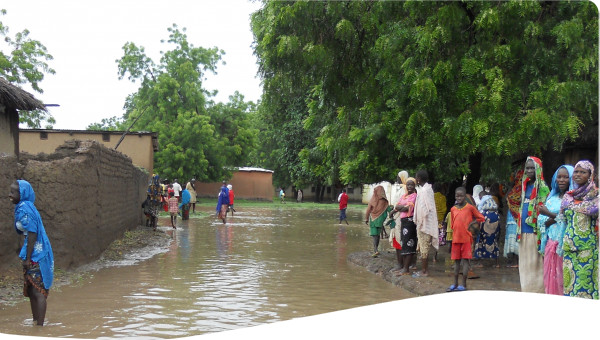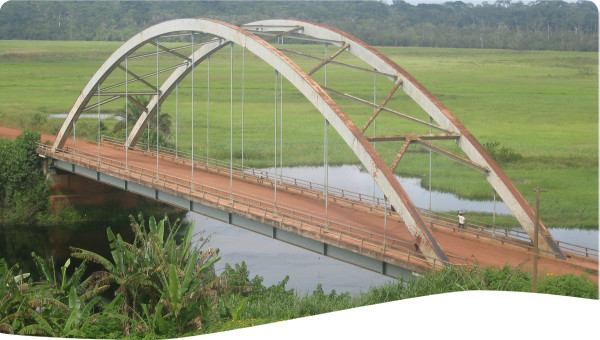In Lima’s Andean highlands, where water is born, Aquafondo leads water sowing and harvesting through the restoration of amunas—pre-Inca canals over 3,000 m a.s.l. that capture and infiltrate rainwater to recharge aquifers and sustain river baseflows months later. With community participation and public–private partnerships, 86 km have been restored, enabling 15 million m³ of infiltration per year—enough for over 300,000 people. These natural infrastructures enhance drought resilience, benefit 11 million Lima residents, and revalue ancestral knowledge as a sustainable, replicable, high-return solution.
Lima is the world’s second-largest city located in a desert and faces severe structural water stress due to scarce natural availability and rapidly growing urban demand (UNESCO, UN-Water, 2024). Over 11 million inhabitants depend on Andean sources, with 80% of the supply coming from the Rímac River basin—an area highly vulnerable to seasonality and climate change. Rainfall is concentrated between December and April, while from June to November streamflows drop by up to 60%, threatening water security and the livelihoods of thousands of rural families.
Since 1962, the Andean glaciers that feed Lima have undergone alarming retreat: La Viuda Glacier has lost over 78% of its surface, and the Central Glacier has receded by 55.5%. Between 2001 and 2019, the Sullcón Glacier—vital for the Rímac basin—retreated 345 meters.
The Santa Eulalia Valley (1,300–5,100 m a.s.l.) preserves extraordinary ancestral knowledge: the amunas—pre-Inca stone and earth channels designed to capture and infiltrate rainfall through natural fractures in the mountain. Months later, this water reemerges in springs and rivers, maintaining baseflows during the dry season. The amuna system represents an ancient form of water sowing and harvesting, a climate adaptation technology developed centuries before the concept of “resilience” existed.
For decades, many amunas fell into disuse, reducing their regulation capacity. This decline was compounded by weak water governance, limited public investment, loss of traditional knowledge, and the migration of youth and farmers seeking better livelihoods. In high-Andean communities where agriculture is the main income source, water scarcity translates into loss of dignity, poverty, and displacement—deepening territorial inequalities.
In response, Aquafondo developed an intervention model combining ancestral knowledge, science, and collaborative investment, linking rural communities, the private sector, public institutions, and international cooperation. These partnerships enabled the rehabilitation of 86 km of amunas across San Pedro de Casta, Huachupampa, Huanza, Carampoma, and San Juan de Iris, strengthening groundwater recharge, mountain ecosystems, and social cohesion. Scientific monitoring confirms over 15 million m³ of water infiltrated annually, equivalent to the domestic use of more than 300,000 people.
Communities have also revived the Fiesta del Agua or Champería, declared Intangible Cultural Heritage, symbolizing their cultural and spiritual bond with water. In this territory—recognized by UNESCO as an Ecohydrology Demonstration Site—science and ancestral knowledge converge to restore balance between ecosystems, culture, and human well-being.
Today, the amunas stand as a comprehensive and proven response to drought, restoring hope and dignity to high-Andean communities while strengthening Lima’s water security and resilience against the growing threat of prolonged dry periods.
Since 2016, Aquafondo—together with rural communities, public and private sectors, and international cooperation—has led a systematic process to rehabilitate amunas in the upper Rímac River basin. The main objective has been to increase water infiltration during the rainy season to ensure availability during the dry months, strengthening drought resilience and Lima’s water security.
The process began with a comprehensive territorial analysis combining physical, socioeconomic, and cultural studies to identify sub-basins with the highest recharge potential. Based on this, a participatory process of identification and prioritization was developed, where communities, together with Aquafondo specialists, defined the amuna sections to be restored according to efficiency, accessibility, and local acceptance.
Subsequently, topographic, geohydrological, and environmental studies were carried out to design structural plans while preserving traditional materials and techniques. The works were implemented through paid communal labor, generating temporary green jobs and boosting local employment. Communities contributed ancestral knowledge, while Aquafondo provided technical supervision and specialized engineering.
A key component has been the incorporation of scientific monitoring. In partnership with the University of Engineering and Technology (UTEC) and The Nature Conservancy, rain gauges, sensors, and tracers were installed to quantify infiltration and validate the effectiveness of the amunas, generating scientific evidence to guide investments in natural infrastructure.
The governance model promoted by Aquafondo is another pillar of success. Empowered communities, organized in Amuna Committees, are responsible for sustainability, identifying new zones, and monitoring restored structures. These committees coordinate with rural water boards (JASS) and irrigation users’ associations, creating a local water management network that connects headwaters with downstream urban areas.
The financing model is based on collaborative investment for water resilience, combining private and international cooperation funds. This approach has promoted and anticipated the implementation of the Mechanisms of Retribution for Ecosystem Services (MERESE) led by SUNASS, laying the regulatory groundwork for water utilities to allocate tariff resources to the conservation of source ecosystems. Aquafondo channels environmental and climate responsibility funds toward amuna projects, while communities contribute local knowledge. In doing so, a pioneering climate investment model has been consolidated, showing that each dollar invested can infiltrate thousands of liters of water and generate multiple returns in soil conservation, biodiversity, and rural green employment.
The project also introduced technical and social innovations. Design and implementation respected local knowledge while integrating modern tools such as hydrological modeling (HEC-HMS), water balance analysis, satellite remote sensing (NDVI, Sentinel-2), drone mapping, and sensor-based monitoring. This hybrid approach bridged tradition and science, building community trust and institutional credibility.
The collaborative work also influenced national policy, contributing to the inclusion of water sowing and harvesting practices in the Ministry of Agriculture’s guidelines (Ministerial Resolution 146-2022) and in the National Strategy for Natural Infrastructure for Water Management (ENIIGA). Thanks to this joint action, amunas are now recognized as an ancestral practice of cultural value and a proven investment in climate resilience, supported by scientific evidence, financial sustainability, and strong social impact—strengthening water security in the face of droughts.
The most tangible impact of the intervention has been hydrological. The 86 kilometers of amunas rehabilitated by Aquafondo in the upper Rímac basin recharge more than 15 million m³ of water per year, a volume equivalent to the annual domestic use of over 290,000 people. This restoration has increased groundwater recharge, stabilized springs and dry-season flows, and reduced surface runoff, improving water regulation that sustains both Lima and the mountain communities.
In parallel, the recovery of vegetation cover and soil moisture has contributed to the conservation of more than 5,000 hectares of high-Andean ecosystems, reducing erosion and encouraging the return of native species. These achievements reinforce the ecological role of headwater areas and their function as strategic natural infrastructure for drought resilience.
On the social front, the initiative generated temporary green jobs and local economic opportunities for over 1,000 community members through paid communal work, directly benefiting rural families. More than 900 people were trained in water management, climate change, and amuna maintenance, with 24% women’s participation. This capacity building has strengthened local governance, community leadership, and intergenerational knowledge transfer, reinforcing the value of water as a driver of well-being and social cohesion.
The revival of the “Fiesta del Agua” or Champería—declared Intangible Cultural Heritage of the Lima Region—has renewed the cultural ties between communities and their territory. This symbolic component, integrated with the technical process, contributes to the sustainability of the interventions and strengthens the collective sense of belonging around water management.
At the institutional level, the experience has become a reference for public policy. The amunas have been incorporated into the National Strategy for Natural Infrastructure for Water Management (ENIIGA) and the Ministerial Resolution 146-2022 of the Ministry of Agriculture (MIDAGRI). Likewise, the Carhuayumac micro-basin was recognized by UNESCO as an Ecohydrology Demonstration Site, validating Aquafondo’s model as an example of integrated watershed management.
Economically, the results show that amunas are a cost-effective investment in climate resilience: each dollar invested in their restoration infiltrates more than 1,000 liters of water and generates long-lasting environmental, social, and cultural benefits. This model has also advanced the implementation of the Mechanisms of Retribution for Ecosystem Services (MERESE), demonstrating that investing in nature is both profitable and replicable.
Overall, the results show that amunas successfully integrate ancestral knowledge with scientific evidence to reduce vulnerability to prolonged droughts, restore ecosystems, and improve rural livelihoods. Their technical efficiency, social legitimacy, and economic sustainability confirm that protecting and revitalizing ancestral knowledge is a direct investment in Lima’s and the Andes’ water resilience.
Integrating Andean ancestral knowledge with modern science strengthens the effectiveness and legitimacy of water solutions.
Combining traditional practices with technical monitoring tools scientifically demonstrated the efficiency of amunas, consolidating their social and institutional acceptance.
Collaborative investment is essential for the sustainability of nature-based solutions.
Mobilizing contributions from companies, international cooperation, and local participation fosters shared responsibility and ensures continuity beyond the project cycle.
Communities are water stewards, not beneficiaries.
Community leadership and the creation of Amuna Committees consolidate strong local governance and social sustainability of actions against drought.
Scientific evidence facilitates policy influence.
Hydrological monitoring and measurable results were key for amunas to be recognized in national instruments and climate agendas.
Culture and identity are pillars of resilience.
Reviving cultural practices reinforces belonging, collective commitment, and the long-term continuity of conservation actions.


